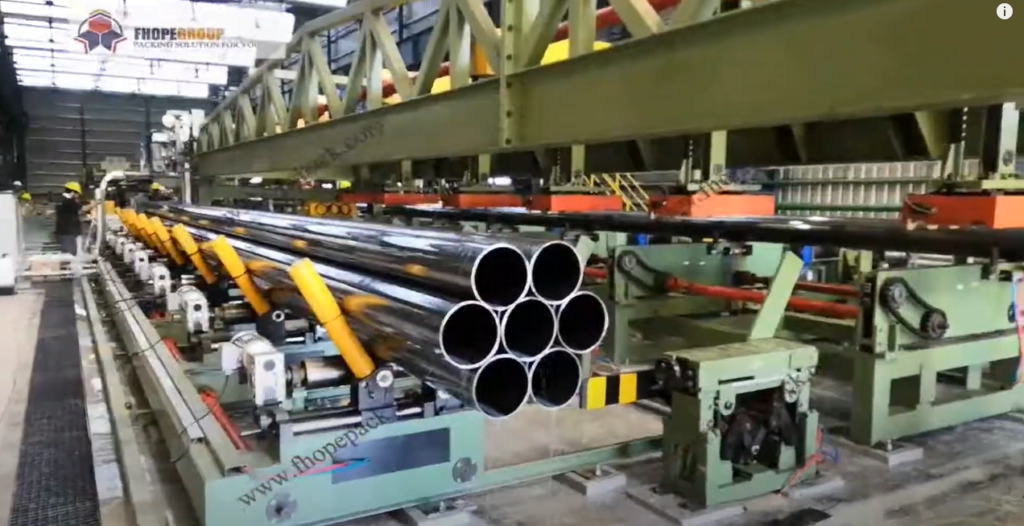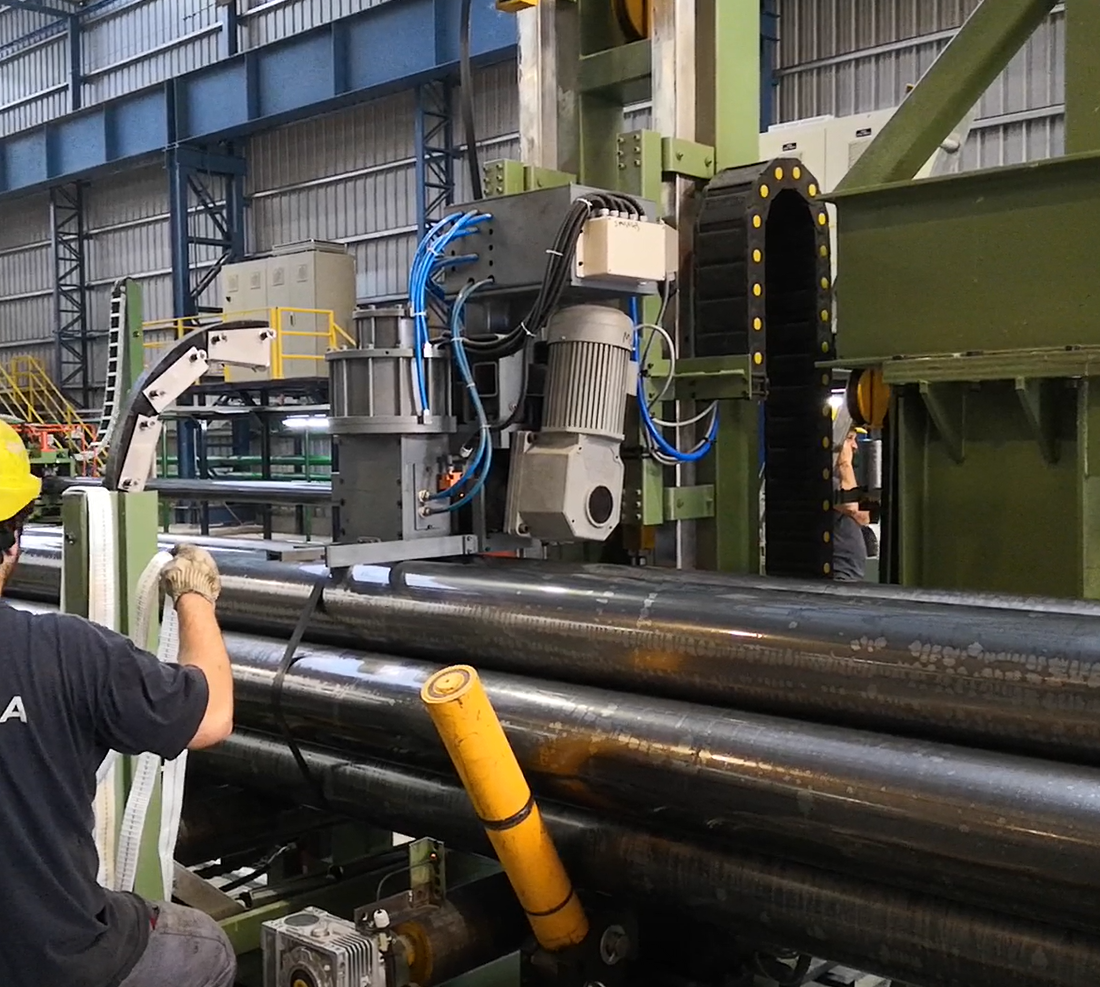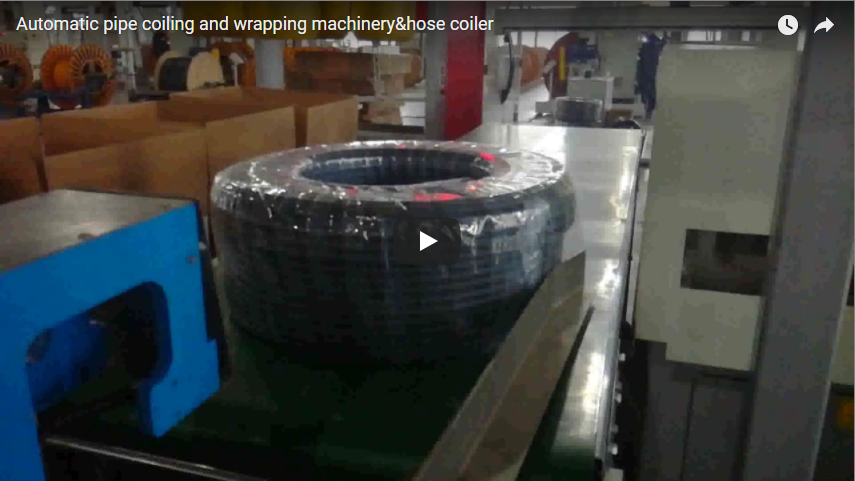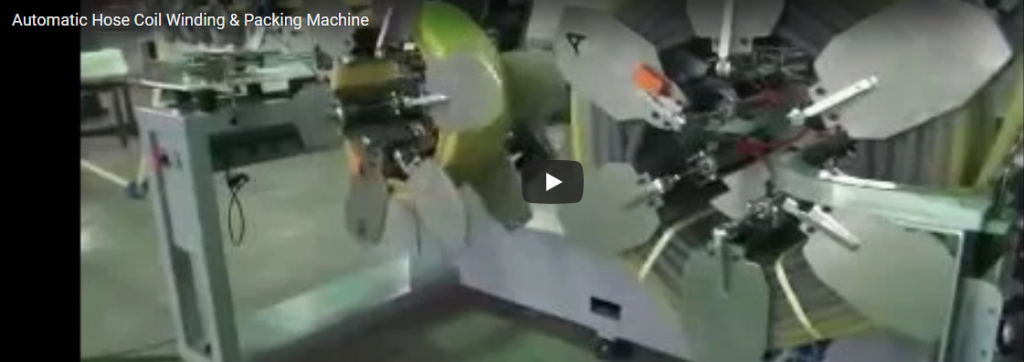Showcase: Revolutionizing Steel Pipe Bundle Making with Automated Solutions
Executive Summary: Advancing Steel Logistics Through Automation
In today's highly competitive global steel market, operational efficiency, workplace safety, and product integrity are paramount. For steel pipe manufacturers, particularly those handling high volumes or specialized dimensions like facilities in Kuala Lumpur, Malaysia, the end-of-line bundling and packaging process presents significant operational bottlenecks and risks. Traditional manual methods are increasingly misaligned with the demands for speed, precision, and cost-effectiveness. This article explores the transformative impact of automated steel pipe bundle making and strapping lines, drawing insights from industry best practices and technological advancements reflected in recent engineering R&D and patent literature.
The Critical Need for Automation in Steel Pipe Handling
Manual pipe bundling is inherently challenging. Key issues include:
- Operational Inefficiency: Manual processes are labor-intensive and slow, significantly impacting overall throughput and potentially delaying shipments. Coordinating multiple workers for forming and strapping heavy, often long, steel pipes consumes valuable time and resources.
- Safety Concerns: Handling steel pipes manually, especially smaller diameters (e.g., 20mm) which are difficult to stack securely, poses significant ergonomic and safety risks. Industry safety reports frequently highlight material handling as a major source of workplace incidents in manufacturing. Manual strapping tools also contribute to repetitive strain injuries.
- Inconsistent Quality: Achieving uniform bundle shapes and consistent strap tension manually is difficult. This variability can lead to unstable bundles, increasing the risk of product damage during internal logistics, storage, or final transportation – impacting customer satisfaction and incurring costs.
- Rising Labor Costs & Scarcity: Increasing labor costs and difficulties in sourcing skilled workers for demanding physical tasks further exacerbate the limitations of manual operations.
Research published in journals like Iron & Steel Technology often underscores the correlation between automation in material handling and reductions in both operational costs and safety incidents within steel processing facilities. The move towards automation is not just an efficiency upgrade; it's a strategic necessity.

Technological Breakthrough: The Automated Bundling & Strapping Solution
The introduction of integrated, automatic pipe bundle making machines coupled with automated strapping systems represents a significant technological leap. These systems address the core challenges of manual handling head-on.
- Mechanism: Typically, these lines involve automated pipe feeding, layer forming, precise bundle shaping (often hexagonal or square), and subsequent strapping at pre-defined positions using robust steel or PET strapping heads. Advanced systems incorporate sensors for alignment verification and automated tension control, ensuring consistency.
- Innovation: Recent advancements, evident in patent filings within the material handling sector (e.g., related to automated guides, tensioning mechanisms, and safety interlocks - see classifications like B65B 13/00), focus on enhancing speed, reliability, and the ability to handle a wider range of product dimensions with minimal changeover time.
- Efficiency: A single operator can often oversee the entire automated line, shifting labor from physically demanding tasks to supervision and quality control. This dramatically increases productivity per employee.
Quantifiable Advantages and Return on Investment (ROI)
Implementing an automated steel pipe bundling and strapping line yields substantial, measurable benefits:
- Enhanced Throughput: Cycle times are drastically reduced. For instance, completing a strapping cycle in approximately 20 seconds per position allows for significantly higher processing rates compared to manual methods.
- Cost Reduction: Direct labor costs are lowered significantly. Furthermore, indirect savings accrue from reduced product damage, minimized waste of strapping materials, and lower insurance or compensation costs due to improved safety. Industry analyses suggest automation in heavy manufacturing can yield payback periods of 18-36 months, depending on operational scale.
- Improved Safety & Ergonomics: Automating the heavy lifting, manipulation, and strapping virtually eliminates associated ergonomic risks and potential injuries, contributing to a safer work environment compliant with OSHA and ISO standards.
- Consistent Quality & Package Integrity: Automated systems produce uniformly shaped and securely strapped bundles every time. This consistency improves stackability in warehousing, optimizes space utilization, and ensures bundles withstand the rigors of transport, enhancing brand reputation.
- Streamlined Logistics: Predictable output and standardized bundle formats simplify downstream processes, including inventory management, loading, and integration with Warehouse Management Systems (WMS).
Technical Specifications & Customization Capabilities
A key strength of modern automated bundling lines is their adaptability to specific production requirements. Based on typical industry needs, such as those observed in Kuala Lumpur:
- Pipe Handling Range:
- Diameter: 20 mm – 110 mm
- Length: 6 meters – 8 meters (configurable)
- Bundle Specifications:
- Outer Diameter (OD): 350 mm – 700 mm
- Maximum Weight: Up to 4 Tons (Customizable solutions available for higher capacities, e.g., 15 Tons)
- Performance:
- Strapping Speed: Approx. 20 seconds per strap position
- Strapping Positions: Typically 3 or more, strategically placed for optimal bundle stability.
- Customization: Solutions can be engineered to handle different pipe profiles (round, square, rectangular), bundle shapes, strapping materials (steel/PET), and integration requirements with existing plant infrastructure.

Case Study: Transforming Operations in Southeast Asia
A steel pipe manufacturer in the Kuala Lumpur region faced persistent challenges with their manual bundling process for pipes, particularly smaller diameter products. Operational bottlenecks, inconsistent bundle quality leading to storage issues, and high labor intensity were hindering growth.
Following the implementation of a tailored automatic pipe bundle making and strapping line:
- Efficiency Gains: The company reported a remarkable 30% increase in overall packaging line efficiency within the first six months.
- Labor Optimization: Labor requirements for the bundling process were reduced by 40%, allowing skilled workers to be reassigned to higher-value tasks.
- Quality Improvement: Incidences of bundle collapse and pipe damage during handling and transport dropped significantly, leading to improved customer feedback and reduced rework costs.
- Enhanced Safety: Lost time incidents related to manual handling in the packaging area were virtually eliminated.
Similarly, a Malaysian steel pipe distributor leveraged automation to overcome chronic delays and safety hazards associated with manual bundling. They achieved a 50% reduction in bundling cycle time, enabling them to meet tighter delivery schedules and significantly improve workplace safety metrics.
Integration and Future-Proofing Operations
Advanced automated bundling lines are often designed for integration with broader factory automation systems. Connectivity with Manufacturing Execution Systems (MES) or Enterprise Resource Planning (ERP) platforms allows for real-time data exchange, production tracking, and enhanced inventory control. Features like automated labeling and data logging further streamline information management, providing valuable insights for continuous process improvement and ensuring traceability throughout the supply chain. Investing in such technology is a key step in future-proofing manufacturing operations.
Partnering for Advanced Automation Solutions
Transitioning to automated bundling and strapping requires a partner with deep expertise in both machine engineering and the specifics of the steel industry. Evaluating potential solutions should involve assessing:
- Proven track record and industry references.
- Customization capabilities to meet unique operational needs.
- Robustness and reliability of the equipment.
- Availability of comprehensive support, training, and maintenance services.
Are you ready to elevate your steel pipe packaging operations to achieve new levels of efficiency, safety, and quality? Contact our specialists today to discuss your specific requirements. We provide detailed consultations, customized proposals, and can arrange demonstrations to showcase the tangible benefits of our automated solutions for your facility. Let us help you implement state-of-the-art automation to optimize your value chain.
Frequently Asked Questions (FAQs)
-
What range of pipe sizes can the automated system accommodate? Our systems are typically designed to handle pipes with diameters from 20mm up to 110mm and standard lengths between 6-8 meters. However, these parameters are highly customizable based on client needs.
-
What is the typical cycle time for strapping a bundle? Each strapping position can typically be completed in approximately 20 seconds. With multiple strapping heads (commonly three), the system ensures secure and swift bundle completion.
-
Can the system handle very heavy pipe bundles? Yes, standard configurations are designed for bundles with an OD of 350-700mm and weights up to 4 tons. We also engineer custom solutions for significantly heavier bundles, reaching capacities of 15 tons or more if required.
-
What level of maintenance is required for this automated system? The equipment is built for industrial environments and requires standard preventive maintenance. Regular inspections, lubrication, and basic upkeep ensure optimal performance and longevity. Comprehensive training and maintenance support are provided.
-
Can this system be integrated with our existing plant management software? Yes, our automated lines can typically be designed with communication interfaces (e.g., Profibus, Profinet, Ethernet/IP) to integrate with existing MES/ERP systems for data exchange and centralized control.






